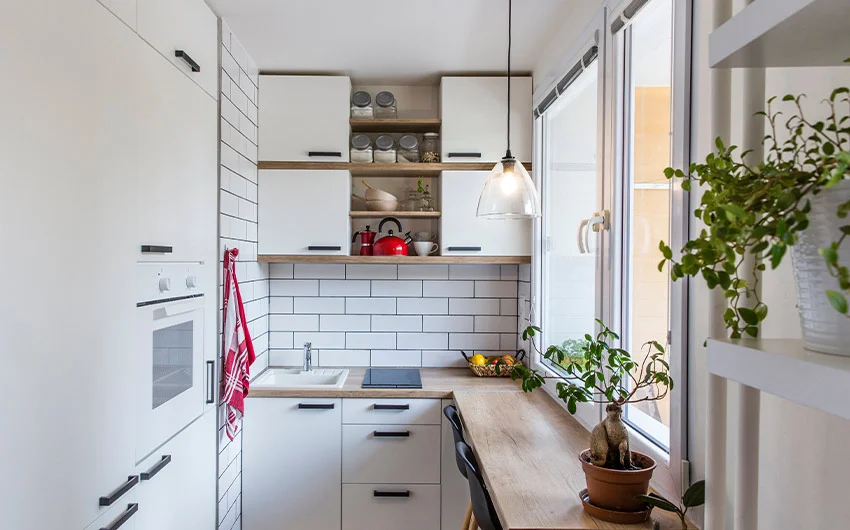Designing a small kitchen can be a daunting task. The limited space often poses a challenge, making it difficult to create a functional and visually appealing kitchen. However, with the right strategies and a bit of creativity, you can transform your small kitchen into an efficient and stylish space. In this comprehensive guide, we will delve into various kitchen design ideas that can help you make the most of your small kitchen. We will cover everything from understanding your kitchen space to aesthetic considerations and implementation.
Understanding Your Kitchen Space

Measure and Assess
The first step in designing a small kitchen is to understand the space you have. Measure the dimensions of your kitchen, including the floor space, wall space, and ceiling height. Take note of any architectural features or obstacles that may impact your design. This will help you plan your layout and choose the right furniture and appliances.
Evaluate Your Needs
Next, assess your cooking and storage needs. What are the essential appliances you need? How much countertop space and cabinetry do you require? How many people will be using the kitchen? These considerations will guide your design decisions and ensure that your kitchen is not only stylish but also functional.
Space-Saving Kitchen Design Strategies

Optimize Layout
The layout of your kitchen can significantly impact its functionality and appearance. Explore different layout options such as U-shaped, L-shaped, or galley-style. The goal is to create an efficient work triangle – the path between your sink, stove, and refrigerator. Also, don’t forget to make use of corners and awkward spaces. With the right design, these can become valuable parts of your kitchen.
Maximize Storage
In a small kitchen, storage is key. Make use of vertical space with tall cabinets, shelves, and racks. Consider incorporating pull-out drawers, lazy susans, and other organizational solutions. Built-in or custom-designed storage options can also help you maximize your space.
Streamline Appliances

Choosing the right appliances can also save you a lot of space. Consider compact or integrated appliances. Multi-functional appliances, such as a combination oven-microwave, can also be a great space-saver. Under-counter or wall-mounted appliances can free up valuable countertop space.
Enhance Lighting
Good lighting can make a small kitchen feel more spacious and inviting. Incorporate a mix of task lighting, ambient lighting, and accent lighting. LED or energy-efficient lighting can save space and energy. If possible, make use of natural light through windows or skylights.
Aesthetic Considerations

Color and Finishes
The colors and finishes you choose can greatly influence the perception of space in your kitchen. Light, neutral colors can create an illusion of more space. Reflective surfaces, such as glossy tiles or mirrored backsplashes, can also help. Experiment with different cabinet finishes – wood, laminate, or glass – to find what works best for your kitchen.
Minimalist Design
A minimalist design can make a small kitchen feel more spacious. Opt for clean, streamlined cabinetry and hardware. Minimize visual clutter by hiding appliances and storage. Open shelving or glass-fronted cabinets can create a sense of openness.
Multifunctional Furniture
Furniture that serves dual purposes can be a great space-saver. Consider a kitchen island with built-in seating, or folding or sliding tables and chairs. Flexible storage solutions, like rolling carts or portable islands, can also be very useful.
Bringing It All Together

Visualize the Final Design
Once you have a plan, create a detailed floor plan or 3D rendering of your kitchen layout. This will help you visualize the final design and make any necessary adjustments. Experiment with different design elements and furniture placements to find the perfect balance between functionality and aesthetics.
Implement and Refine
When you’re ready to implement your design, consider working with a professional designer or contractor. They can help bring your vision to life and ensure that everything is installed correctly. Be prepared to make adjustments during the installation process. Once your kitchen is complete, continuously evaluate its functionality and aesthetics and make refinements as needed.
Conclusion
Designing a small kitchen requires careful planning and creative thinking. By understanding your space, optimizing your layout, maximizing storage, streamlining appliances, and making thoughtful aesthetic choices, you can create a kitchen that is both functional and stylish. Remember, the key is to balance functionality and style. So, don’t be afraid to explore different kitchen design ideas and find what works best for you. Happy designing!




